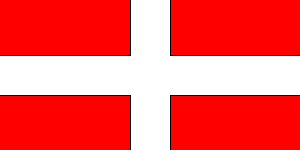 Kritsen
Kritsen  Kritsen
Kritsen Location: On the eastern edge of Kániltóm, the main continent. Bounded on the east by ocean, on the west by the regions of Geneshlichha in the north, Lhekania in the mid-section, and Asketana in the south.
Geography: Largely mountainous, Kritsen includes the Eastern mountain chain, the most-inland edge of which forms the border with the three other regions which Kritsen adjoins. The mountain chain varies from 300 to 500 miles wide, and runs from nearly the northern edge of the continent, with the foothills rising a mere 50 miles from the northern coast, thru the entire north-south length of the continent and onto the Báláshán peninsula in the south. The chain itself continues off the end of Báláshán into a chain of islands, becoming more and more spread out until it reaches the island of Váyná in the southern hemisphere.
The mountains are the highest on the planet, reaching heights of up to 15 miles, with the highest point at Mount Váláqentá in the middle latitudes. They gradually give way in the east to foothills, and then to a narrow, rolling coastal plain that varies between 100 and 200 miles wide, running nearly the length of the continent, excluding the Báláshán peninsula.
On the western side the mountains drop off more sharply, falling into dry lowlands in the interior. The Shánázár desert, which is the driest place on Aluria, takes up much of the mid-latitudes in this area, although in the north and south are wetter, agriculturally rich regions.
Climate: Because Kritsen runs the length of the continent from north to south, its climate varies with the latitude. Additionally other than the narrow coastal plain, most of the region is mountainous, often at high altitudes. In these areas the temperature is often in the low 60's, cooler at night. The costal plain in the north sees similar temperatures, while in the south temperatures reach the high 90's during the day and 70's at night. Much of the region has moderate rainfall, and the mountains and valleys are filled with streams and rivers, providing a flourishing environment for plant life, and allowing the region to be mostly self-sufficient in crops.
Population: The population of Kritsen is concentrated in three major cities and their surrounding suburbs. The remainder of the population is found in small villages scattered throughout the mountain valleys, and in small farming and fishing communities near the coast. Because of the often extreme height of the mountains, the villages in that area are spread widely, often with distances up to 250 miles between them.
The largest city in the region is Váláqentá, the City in a Mountain. Váláqentá was constructed inside the mountain of the same name, which is the highest point on Aluria, to commemorate the unification of the planet and to serve as the capital for the new united government. The city consists of two sections, Váláqentá Elvácá or Outer Valaquenta, which is in the valleys surrounding the mountain, and Váláqentá Tseqelsá or Inner Valaquenta, which is the capital proper, and is located in a massive chamber carved out within the base of the mountain. The buildings of the city are in the chamber itself and are constructed of granite, and were actually hollowed out of the material of the mountain itself in most cases rather than being constructed separately. The city also includes several levels dug out beneath the main chamber, which contain offices, visitor lodging, and appartment style housing for full time inhabitants. Also contained on one of the levels is the University, which is a renowned school of higher learning for the Alur.
The view of the sunrise or sunset from within Váláqentá is not to be missed. The walls of the main chamber are lined with a refined crystal used to bring in light from the mountain surface through huge crystal and mirrored ducts. During sunrise and set, as the sky outside fades through a series of colors from its normal light lavender to finally a deep maroon, these colors are reflected into the city and the entire chamber takes on almost a psychedelic glow. This can best be observed from the top of one of the buildings, especially from the balcony of the capitol building, which being higher than the surrounding structures provides a sweeping view of the city.
The next largest city in the region is Káláshéná, located in the north-east quadrant, on the coast. Káláshéná is the capital of the region and is known for its historic center of town, dating back to the earliest days of Kritsen's history. Káláshéná is called the City of Brick, due to its construction. On the northern coast fine building stone is limited so the inhabitants developed a process of making bricks from the local mud and clay. This gives the city a deep blackish look. The bricks are often smoothed and in finer buildings mica or quartz are added to give a more attractive shine.
Culture: Linguistically the Kritsenese dialect, or a normalized version of it, is considered the standard for Aluric, due to having the planetary the capital located in the region. Culturally the Kristenese are often isolationist and tend to hold onto older beliefs and customs, especially in the mountain villages. These are known for their etherial quality, and the feeling of wilderness that one gets while visiting. Also located in the mountain areas are numerous Ósten or Castles, some in ruins but many still inhabited. These are the cultural centers of the villages where they are located and make interesting visiting.
The coastal plain has a more open, relaxed quality about it, with numerous farming and fishing villages scattered throughout. These have a different feeling about them than the mountain regions, and the visitor will find many warm welcomes waiting there.